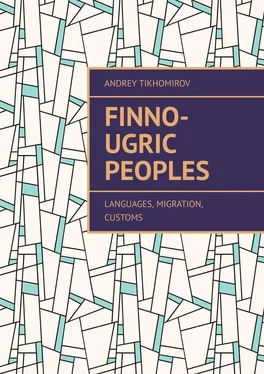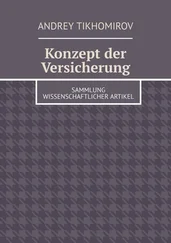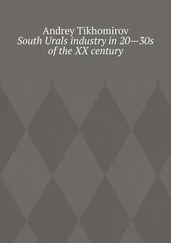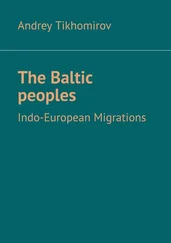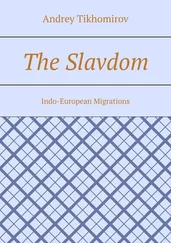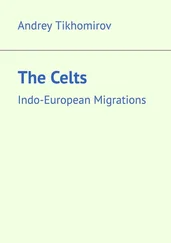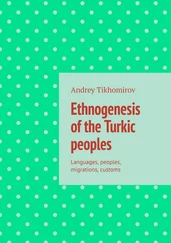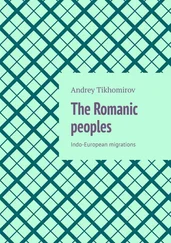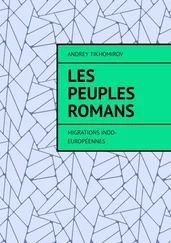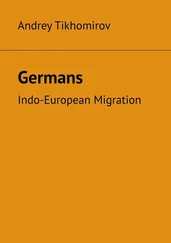Andrey Tikhomirov - Finno-Ugric peoples. Languages, Migration, Customs
Здесь есть возможность читать онлайн «Andrey Tikhomirov - Finno-Ugric peoples. Languages, Migration, Customs» — ознакомительный отрывок электронной книги совершенно бесплатно, а после прочтения отрывка купить полную версию. В некоторых случаях можно слушать аудио, скачать через торрент в формате fb2 и присутствует краткое содержание. ISBN: , Жанр: История, Языкознание, на английском языке. Описание произведения, (предисловие) а так же отзывы посетителей доступны на портале библиотеки ЛибКат.
- Название:Finno-Ugric peoples. Languages, Migration, Customs
- Автор:
- Жанр:
- Год:неизвестен
- ISBN:9785449828439
- Рейтинг книги:5 / 5. Голосов: 1
-
Избранное:Добавить в избранное
- Отзывы:
-
Ваша оценка:
- 100
- 1
- 2
- 3
- 4
- 5
Finno-Ugric peoples. Languages, Migration, Customs: краткое содержание, описание и аннотация
Предлагаем к чтению аннотацию, описание, краткое содержание или предисловие (зависит от того, что написал сам автор книги «Finno-Ugric peoples. Languages, Migration, Customs»). Если вы не нашли необходимую информацию о книге — напишите в комментариях, мы постараемся отыскать её.
Finno-Ugric peoples. Languages, Migration, Customs — читать онлайн ознакомительный отрывок
Ниже представлен текст книги, разбитый по страницам. Система сохранения места последней прочитанной страницы, позволяет с удобством читать онлайн бесплатно книгу «Finno-Ugric peoples. Languages, Migration, Customs», без необходимости каждый раз заново искать на чём Вы остановились. Поставьте закладку, и сможете в любой момент перейти на страницу, на которой закончили чтение.
Интервал:
Закладка:
Finno-Ugric peoples
Languages, Migration, Customs
Andrey Tikhomirov
© Andrey Tikhomirov, 2020
ISBN 978-5-4498-2843-9
Created with Ridero smart publishing system
Finno-Ugric languages
Finno-Ugric languages (or Finno-Ugric languages) are a group of languages that are closely related to the Samoyed languages and together with the latter form a large genetic Uralic language family.
Finno-Ugric languages are divided into the following branches: Hungarian, represented by the Hungarian language; Ob-Ugric, consisting of the Mansi and Khanty languages spoken in the northern part of the Ob River basin; Baltic-Finnish with languages: Finnish, Estonian, Libyan, Vodsky, Vepsian, Izhora and Karelian; Sami, represented by the Sami language, spoken by the Sami (Lopari) living on the Kola Peninsula, in northern Finland, Sweden and Norway; Mordovian with two main dialects – Erzya and Moksha; Mari, consisting of meadow-east and mountain dialects; Permian, including the Udmurt language and the Komi language with the Komi-Zyryan, Komi-Permyak and Komi-Yazvin dialects.
Samoyed languages, family (according to other classifications, group) of languages as part of the genetic community of the Uralic languages. It includes languages: Nenets, Enets, Nganasan, Selkup, almost extinct Kamasin, extinct Matorian (motor), Karagas and Thai. Samoyans, out of date. – Samoyeds, (annalistic – samoyad) (from Samayemne, in the Sami language – the land of the Sami), 1) The old Russian name of the Sami and other peoples of the North of Russia and Siberia. 2) The obsolete name of all Samoyed peoples.
In addition, the so-called Ural race stands out, which occupies an intermediate position between the Mongoloid and Caucasoid races. Straight dark hair, dark eyes, sometimes a flat face, a strongly developed epicanthus (a narrow nose with a concave back) are characteristic. Distributed now in western Siberia (Khanty, Mansi, Northern Altai, etc.).
The Hungarian language is in close genetic relationship with the Ob-Ugric languages, making up the Ugric group of Finno-Ugric. The Hungarians, who once lived nearby with the Khanty and Mansi, occupied modern territory only in the 9th century. All other Finno-Ugric languages make up the Finnish group or the Baltic-Finnish-Permian group.
Hungarian, Finnish and Estonian languages are developed literary languages, I have an old written language on them. Mordovian, Mari, Udmurt, Komi, Khanty and Mansi as literary languages were formed only in the 20—30s. 20th century.
In the 2nd half of the 14th century Old Permian script was created in the Komi language, which fell into decay in the 18th century. Ancient Perm writing – writing written in the 14th century. missionary Stefan Perm on the basis of one of the ancient dialects of the Komi language. A special alphabet was compiled following the model of Greek and Slavic-Russian; translations of some liturgical books were made. Now out of use. Currently, small monuments are preserved from it in the form of inscriptions on icons and in manuscript books, alphabetical lists, etc. A valuable source for studying ancient Perm writing is the list of liturgies (the so-called Evgenievo-Lepёkhinsky texts), rewritten in the 17th century. Russian alphabet from Old Perm, which is a coherent text about 600 words in size. This writing in the 14—17 centuries. also enjoyed popularity among Russian Moscow scribes, who used it as a cryptography.
The most ancient written monuments are Hungarian (13th c.), Komi (14th c.), Finnish (15—16 cc.).
Common for modern Finno-Ugric languages are some affixes of conjugation, declension and word formation, inherited from the Finno-Ugric base language, as well as several hundred common roots. In Finno-Ugric vocabulary in certain languages, regular sound correspondences are observed. However, modern Finno-Ugric languages, due to their long separate development, have diverged far from each other both in terms of their grammatical structure and in terms of vocabulary; they also vary greatly in sound characteristics. Of the general grammatical features, the following can be noted: the agglutinative grammatical system, the use of postpositions (instead of the prepositions of Indo-European languages), the absence of prefixes (the exception is the Hungarian language), the immutability of adjectives in the position before the defined word (the Baltic-Finnish languages are the exception). In most Finno-Ugric languages, vowel harmony is observed. The vocabulary composition of individual languages was influenced by different languages of neighboring peoples, as a result of which the composition of foreign borrowings is not the same in different languages; for example, in the Hungarian language there are many Turkic and Slavic words, and in the Finnish there are many Baltic, German, Swedish and ancient Russian borrowings.
Modern Finns (Suomalayset) speak Finnish, which belongs to the Western, Baltic-Finnish group of Finno-Ugric languages. Anthropologically, they belong to the Baltic type of the Caucasian race.
Arkhipova N.P. and Yastrebov E.V. in the book “How the Ural Mountains were discovered,” Chelyabinsk, 2nd ed., South Ural Book Publishing House, 1982, p. 146—149, talk about the journey of the Hungarian linguist and geographer Antal Reguli to the Northern Urals in the 40s. 19th century: “Back in his student years, Reguli thought about the origin of the Hungarian language and the Hungarian people. Why does his country speak a language so different from the languages of neighboring countries? Where are the sources of the Hungarian language, where did the ancestors of modern Hungarians come from to Southeast Europe? Reguli I heard that the Hungarians were supposedly from the Urals, but this had to be proved. Having visited Northern Finland, he was struck by the kinship between the Finnish and Sámi (Lapland) languages, on the one hand, and Hungarian, on the other. To continue studying the Finno-Ugric languages and floor of personal relations, Reguli decided to go to Russia.The Hungarian Academy of Sciences allocated him 200 forints (which was equal to 200 gold rubles) for scientific research.In 1841 he arrived in St. Petersburg, where he quickly mastered the Russian language, continued to improve his knowledge of northern languages peoples.
Reguli understood: in order to find out the position of the Hungarian language in the system of languages of the Finno-Ugric group, its origin, it is necessary to penetrate the central and eastern regions of European Russia, the Urals and the Trans-Urals. There lived the mysterious Mansi people (Voguls), then little known in Europe. On October 9, 1843, the traveler traveled to the Urals through Moscow. October 27, he arrived in Kazan. Along the way, Reguli collects material about the language and life of the Mari (Cheremis), Udmurts (Votyaks) and Chuvashs. November 14, 1843 Reguli arrives in Perm, where he began his wanderings through uncharted lands. Having left Solikamsk on November 20, 1843, Reguli crossed the watershed of the Ural Mountains, reached the upper reaches of the Tura River, from where he headed along the eastern slope of the ridge to the north to the upper reaches of the Lozva River. Having lived for about three months among the Mansi, he travels to Verkhoturye, then to Irbit and then to the rivers Tavda and Tobol. In the spring of 1844, Reguli headed up the river Konda, then up the river Pelymu, along the waterway, in places on horseback or on foot next to the loaded horse. Following along the eastern slope of the Urals along the Northern Sosva River, it reaches the headwaters of the Lyapin River and its tributary Khulga in the Subpolar Urals. In the course of its route, Reguli collects the most valuable material on the lifestyle, life and language of the Mansi and Khanty.
Читать дальшеИнтервал:
Закладка:
Похожие книги на «Finno-Ugric peoples. Languages, Migration, Customs»
Представляем Вашему вниманию похожие книги на «Finno-Ugric peoples. Languages, Migration, Customs» списком для выбора. Мы отобрали схожую по названию и смыслу литературу в надежде предоставить читателям больше вариантов отыскать новые, интересные, ещё непрочитанные произведения.
Обсуждение, отзывы о книге «Finno-Ugric peoples. Languages, Migration, Customs» и просто собственные мнения читателей. Оставьте ваши комментарии, напишите, что Вы думаете о произведении, его смысле или главных героях. Укажите что конкретно понравилось, а что нет, и почему Вы так считаете.
